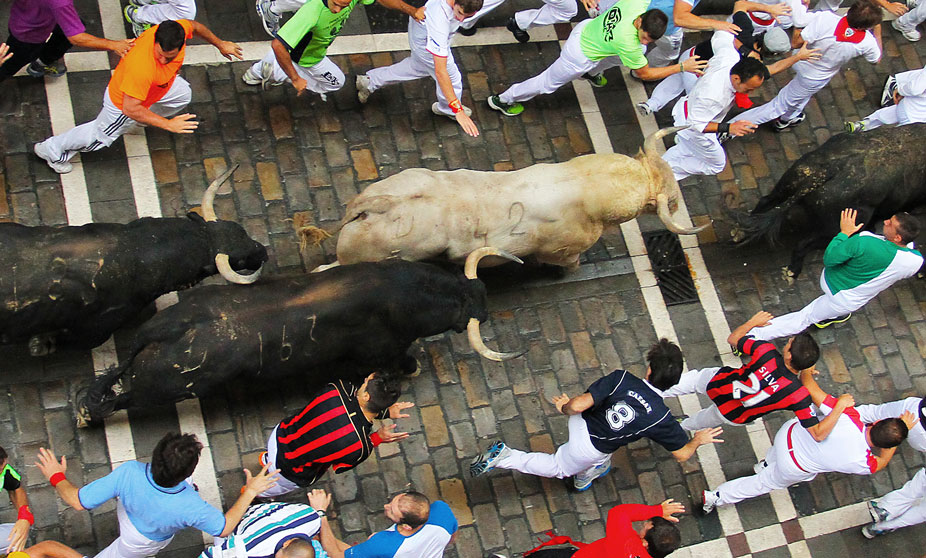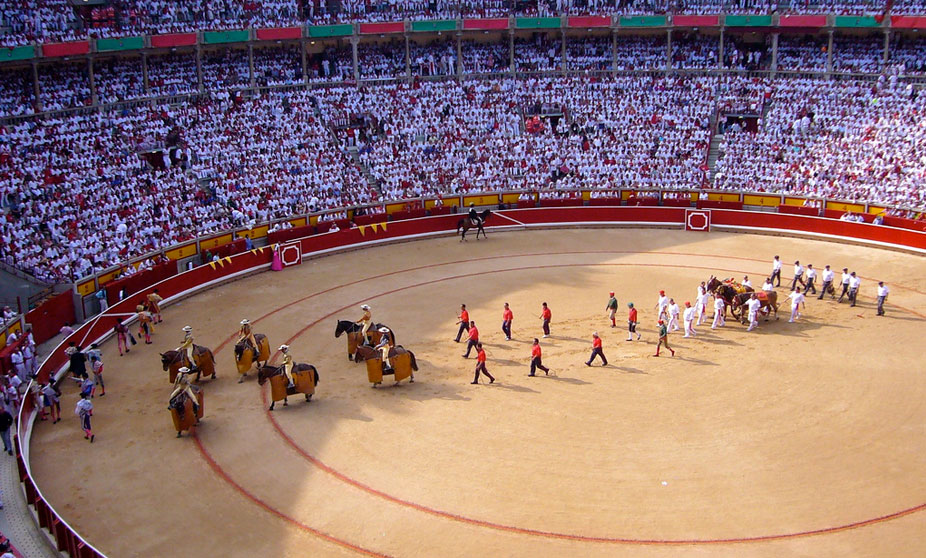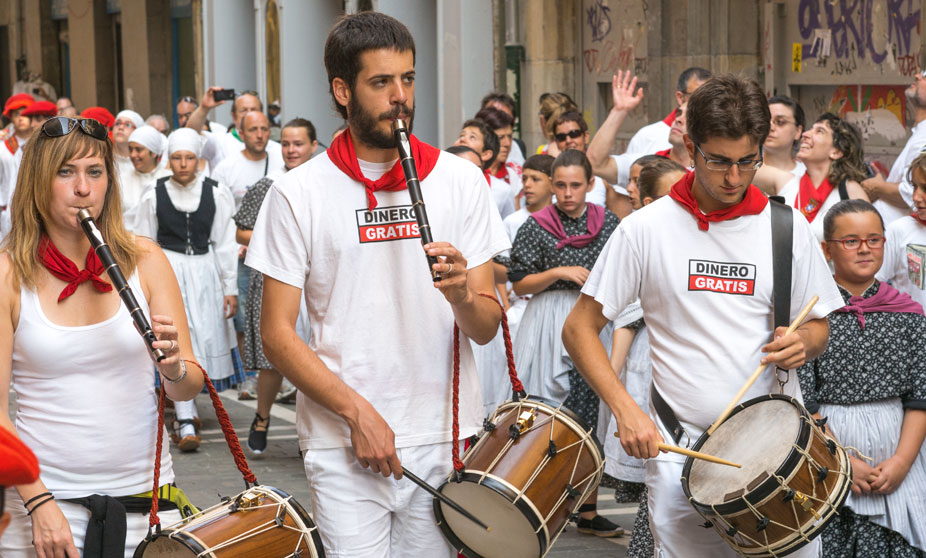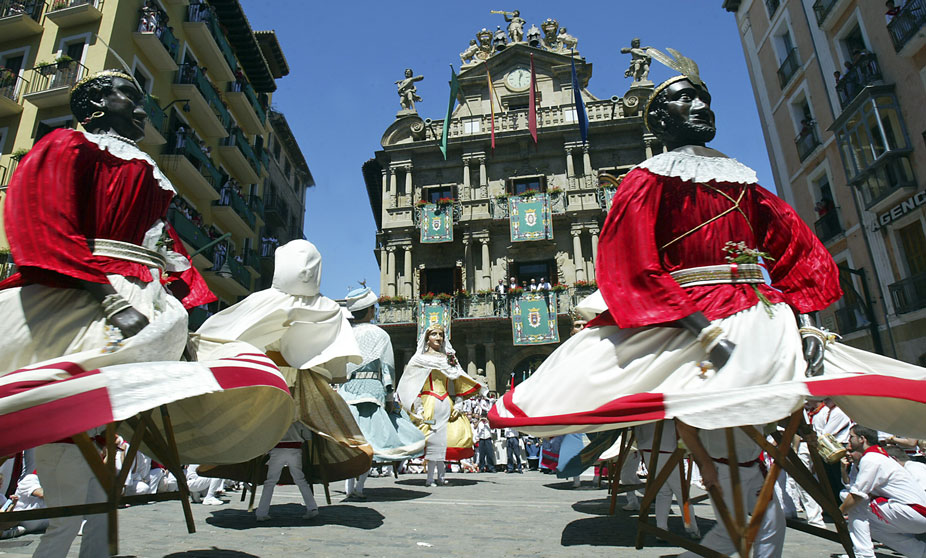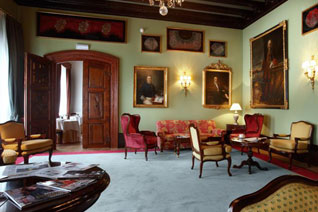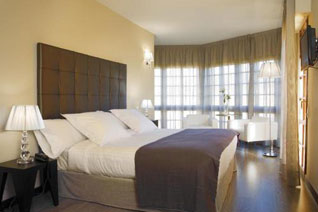The Running of the Bulls (“encierro” in Spanish) is the main highlight of the San Fermin festival and the reason for the festival’s worldwide fame. It takes place every day from the July 7th - 14th at 8 am in Pamplona’s old town, when runners are chased by six bulls for approximately 850 meters until reaching the city’s bullring.
![Running of the bulls (encierro) during San Fermin San Fermin]()
Running of the bulls during San Fermin
![Bulls running in the old town Bulls running in the old town]()
Bulls running in Pamplona's old town
![Bullring after the encierro Pamplona's bullring]()
End of the encierro at the bullring
The running of the bulls is always preceded by the same traditional ritual. Before the encierro, the runners gather around the image of San Fermin located in the Calle de Santo Domingo, just steps away from the corral where the bulls are kept.
Five minutes before 8 am, the runners sing the traditional song a“A San Fermín pedimos” first in Spanish (“A San Fermín pedimos, por ser nuestro patrón, nos guíe en el encierro dándonos su bendición”) and then in Basque (“Entzun arren San Fermin, zu zaitugu patroi, zuzendu gure oinak, entzierro hontan otoi”) which can be translated as “We ask San Fermín, because he is our patron saint, to guide us in the running of the bulls and give us his blessing.”
This is followed by the shout "¡Viva San Fermín! ¡Gora San Fermín!” (Long live San Fermin!). And the whole singing is repeated two more times during those 5 nerve-racking last minutes before the start.
At 8 o’clock, the first of four fireworks is launched, indicating that the running of the bulls has started – the corral door is opened. It is time for the first participants to start running. The second firework explosion indicates that all the bulls have left the corral.
By then, the six bulls are already running down the streets of Pamplona’s old town: from the Santo Domingo Street to the town hall, then through the Mercaderes Street to continue along the Estafeta Street and finishing in the bullring.
It all happens very quickly and usually the encierro is over in under 4 minutes. Once in a while, however, the herd of bulls separates making it even more dangerous. That is why the four firework rockets are so important – they inform the runners of the current situation.
Once all the bulls have reached the bullring and the door of the bullring is closed, the third firework rocket is launched. The fourth and final rocket indicates that all the bulls are locked at the bullring’s corral.
PRACTICAL INFORMATION
Total distance: 850 m
Average total time: between 2 and 4 minutes
Who can run? Everyone that is at least 18 years old. It is free and it is not necessary to register.
Conditions: it is forbidden to run intoxicated; it is forbidden to run with objects (backpack, photo camera, etc)
Access: through the gate at the town hall between 6:30 and 7:30am
If you decide to run the encierro…
If you want to run, we recommend that you inform yourself about it: the itinerary, the dangers, the do’s and don’ts, etc. There are some basic rules that every runner must know.
For example, you should never touch the bulls or run behind them. Also, if you fall, don’t get up, stay in the ground protecting your head with your hands. These are just a couple of many rules/tips, so please make sure to inform yourself before participating.
Be aware of the danger! We are talking not only about the bulls’ horns, but you also do not want to get trampled by one (each bull weighs an average of 600 kg or 1,323 lbs). The overcrowding of the encierro is also something to keep in mind – it is difficult not to stumble or fall because of other runners.
It is also important to understand that it is impossible to run from the beginning to the end. As a runner, you should choose a section and incorporate into the run when the bulls are getting closer.
When the bulls are nearby, run faster trying to stay in front of them until you are tired or feel in danger. When that moment arrives – or once the bulls have passed–, it is time to step aside without putting yourself or any other person in danger.
If you want to watch the encierro…
If you just want to look at the action, you have several possibilities. The cheapest option is to see the running of the bulls from the street – it is free! However, you should know that the itinerary of the encierro is protected by two fences.
The first fence is for runners in danger, while police and emergency services are located between the two fences and viewers behind the second one.
To get a spot, you have to be there before 6:30 am and generally the views aren’t that good because of the double fence. Also, keep in mind that it is a long wait for an event that will go by so quickly (the whole encierro lasts an average of 3 minutes).
The best spot to watch the encierro from the street is at the beginning, at the stretch from the Navarre Museum to the Santo Domingo Street. In that area there isn’t any fence in between, you can watch the runners singing to the saint before the encierro and see quite a long distance in both directions. However, at that spot it is recommendable to arrive before 6 am to find space.
The second possibility for watching the encierro is renting a spot on a balcony. It costs between 50 and 150 € per person, depending on the exact location of the balcony. It is a very comfortable way of seeing the encierro as well as culturally immersive, since you will find yourself “adopted” by a local family for a couple of hours which will also give you the opportunity to learn more about the encierro from them.
The third option for watching the encierro is from the bullring, where the encierro ends. Although you only get to see the very end, there are big screens televising the rest of the encierro and afterwards there is an amateur bullfighting spectacle. The entrance ticket costs 6 €, although the closest stand to the bulls (“tendido” in Spanish) is free from Monday to Friday.







